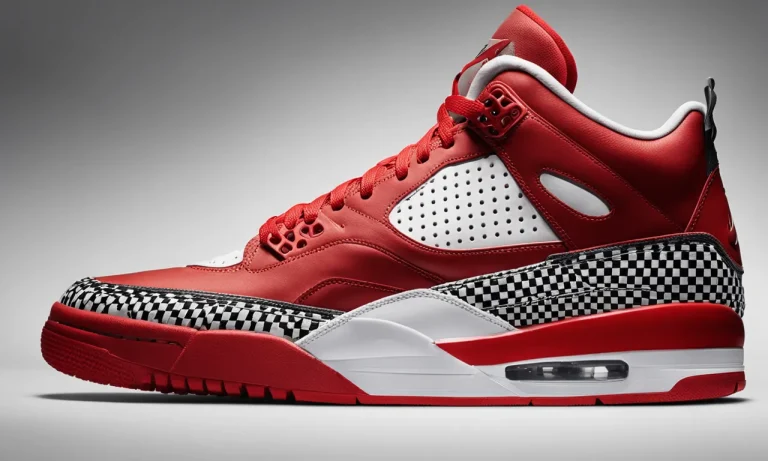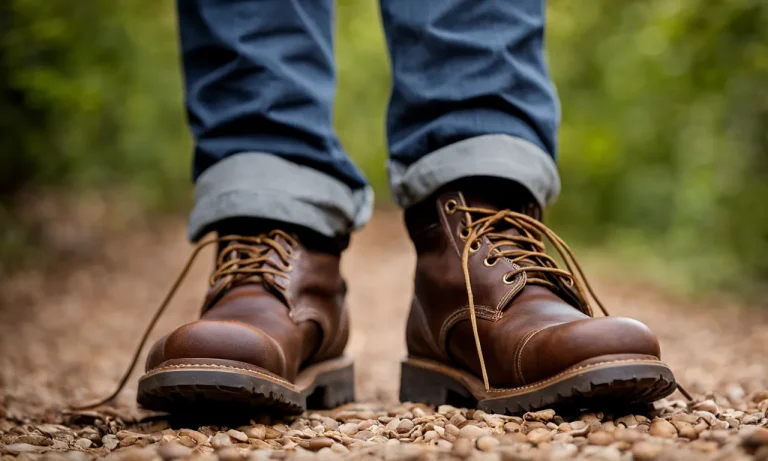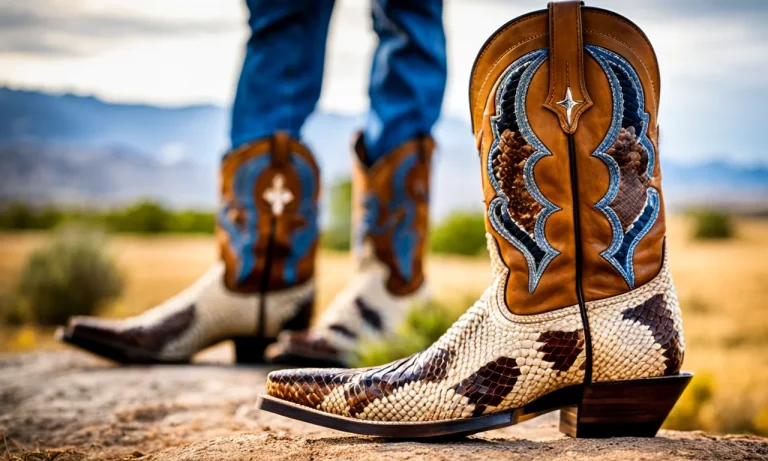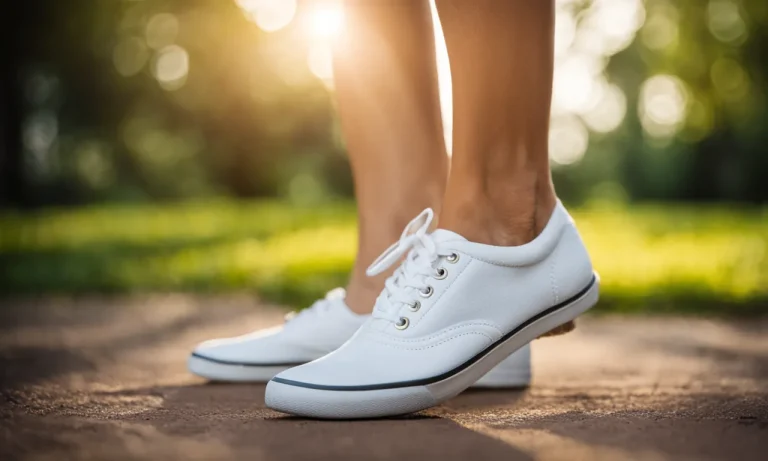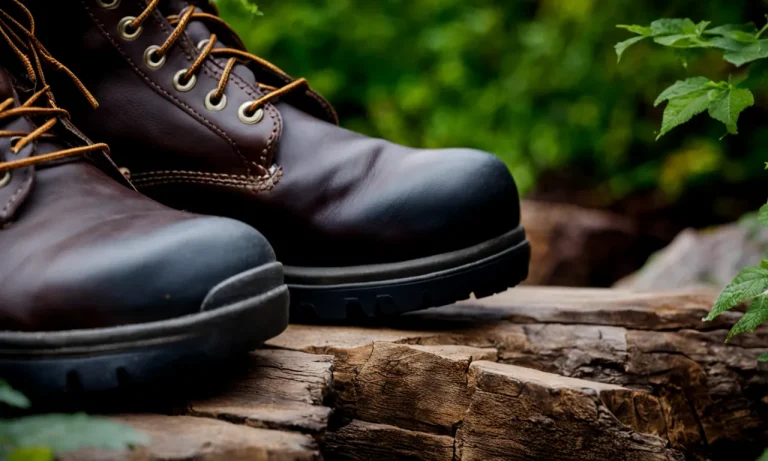Finding the perfect fitting shoe can be tricky. If your feet are on the wider side, you may wonder whether you should opt for a medium or a wide width. The right shoe width ensures your feet aren’t being squeezed but also aren’t slipping and sliding around.
This comprehensive guide will explain the key differences between medium and wide width shoes to help you determine which is best for your foot type.
What Do Medium and Wide Widths Mean?
When it comes to shoe sizes, it’s important to find the right width for a comfortable fit. Two common width options available are medium and wide. Understanding the difference between these widths can help you make an informed decision when purchasing your next pair of shoes.
Medium Width
Medium width shoes, also referred to as standard width shoes, are designed to fit the average foot. These shoes provide a comfortable fit for individuals with feet of average width. They are neither too narrow nor too wide, offering a balanced fit that accommodates most foot shapes.
It’s important to note that not all medium width shoes are created equal. The fit may vary between different brands and styles. It’s always a good idea to try on shoes before making a purchase to ensure the perfect fit.
Wide Width
Wide width shoes are designed for individuals with wider feet or those who require extra room in the toe box area. These shoes provide a more spacious fit and help alleviate discomfort caused by tightness.
Wide width shoes are available in various sizes and styles, ensuring individuals with wider feet can find footwear that is both comfortable and stylish.
Wide width shoes are especially important for individuals with conditions such as bunions or hammertoes, as they offer more room for these foot conditions to be accommodated without causing discomfort.
Other Width Options
In addition to medium and wide widths, there are other width options available to cater to individuals with specific foot needs. Some brands offer narrow width shoes for those with narrower feet, while others provide extra-wide width shoes for individuals with exceptionally wide feet.
It’s worth mentioning that not all shoe styles are available in all width options. For example, certain fashion-forward or specialized shoes may only be available in medium width. It’s always a good idea to check with the manufacturer or retailer to determine the width options available for a particular shoe style.
When it comes to finding the right shoe width, it’s important to prioritize comfort. A well-fitting shoe can make a world of difference in terms of foot health and overall comfort. Remember to measure your feet accurately and try on shoes in different widths to find the perfect fit.
Happy shoe shopping!
How to Measure Your Feet for Proper Width
Using a Brannock Device
If you want to ensure accurate measurements, using a Brannock Device is highly recommended. This tool is commonly found in shoe stores and is specifically designed to measure the length and width of your feet. Simply slide your feet into the device and adjust the sliders until they fit comfortably.
The device will display your shoe size, including the width.
DIY Measuring at Home
If you don’t have access to a Brannock Device, you can still measure your feet at home. Here’s a simple DIY method:
- Place a blank piece of paper on a flat surface.
- Stand on the paper, ensuring that your weight is evenly distributed.
- Trace the outline of your foot using a pen or a pencil.
- Measure the widest part of your foot horizontally.
- Compare this measurement to a shoe size chart to determine your width.
Keep in mind that this method may not be as accurate as using a Brannock Device, but it can still give you a general idea of your foot width.
Considerations for Measuring Kids’ Feet
Measuring children’s feet can be a bit trickier, as their feet are still growing. Here are some considerations to keep in mind:
- Kids’ feet tend to be wider than adults’, so it’s important to measure both length and width.
- Measure their feet while they are standing up, as this will give you a more accurate measurement.
- Allow some room for growth when choosing shoes for kids, but make sure they are not too loose to cause discomfort or tripping.
Remember to measure your child’s feet regularly, as they can outgrow shoes quickly during growth spurts.
For more detailed information and guidance on measuring your feet for proper width, you can visit www.footwearetc.com or www.shoes.com. These websites provide step-by-step instructions and additional tips to help you find the right shoe width for your feet.
Determining If You Need Medium or Wide
Signs You Need Wide Width
Choosing the right shoe size is crucial for comfort and foot health. While most people can comfortably wear medium width shoes, there are instances where a wide width is necessary. Here are some signs that indicate you might need wide width shoes:
- Pain or Discomfort: If you often experience pain or discomfort in your feet, especially in the toe area or the sides of your feet, it could be a sign that your shoes are too narrow. Wide width shoes provide extra room for your feet to breathe and alleviate any pressure points.
- Swelling or Edema: If your feet tend to swell throughout the day, wide width shoes can accommodate the extra volume and prevent constriction that may exacerbate the swelling. This is particularly important for individuals with conditions such as edema or diabetes.
- Bunions or Corns: If you have bunions or corns, wide width shoes can help alleviate the discomfort caused by these conditions. Regular shoes can put pressure on these sensitive areas, leading to pain and irritation.
- Visible Overhang: If you notice that your feet hang over the sides of your shoes, it’s a clear indication that your shoes are too narrow. Wide width shoes will provide the appropriate space for your feet, preventing any overhang.
Remember, it’s essential to prioritize comfort and proper fit when choosing your shoe size. If you exhibit any of these signs, it may be time to consider wide width shoes.
Signs Medium Width Works Best
While wide width shoes are necessary for some individuals, medium width shoes are suitable for the majority of people. Here are some signs that indicate medium width shoes work best for you:
- Comfortable Fit: If you consistently find medium width shoes to be comfortable and experience no pain or discomfort, it’s a good indication that this size is suitable for your feet.
- No Visible Overhang: When you wear medium width shoes, your feet should fit comfortably within the shoe boundaries without any overhang.
- No Swelling or Edema: If you don’t experience any significant swelling or edema in your feet, medium width shoes should provide enough room for your feet to breathe.
- No Issues with Bunions or Corns: If you don’t have any bunions or corns that require extra room, medium width shoes should provide adequate support and comfort.
It’s important to note that shoe sizing can vary between brands, so it’s always a good idea to try on different pairs and consult size charts before making a purchase. Additionally, if you’re unsure about your shoe size, it’s recommended to get a professional fitting to ensure you find the perfect fit for your feet.
Factors that Impact Ideal Shoe Width
When it comes to finding the perfect pair of shoes, the right width is just as important as the right length. Wearing shoes that are too narrow or too wide can lead to discomfort, pain, and even foot problems. But how do you determine the ideal shoe width for your feet?
Several factors come into play when deciding whether to go for a medium or wide width.
Foot Conditions
One of the primary factors that can influence your choice of shoe width is any existing foot conditions you may have. Conditions such as bunions, hammertoes, or arthritis can cause your feet to widen or become more sensitive.
In these cases, opting for a wider shoe width can provide the extra room and comfort your feet need. It’s always best to consult with a podiatrist if you have any foot conditions to ensure you choose the right shoe width.
Weight Gain/Loss
Weight fluctuations can also impact the width of your feet. If you have recently gained weight, it’s possible that your feet have widened as well. On the other hand, weight loss can result in a decrease in foot width.
It’s essential to measure your feet regularly and adjust your shoe width accordingly to ensure a proper fit and avoid unnecessary discomfort.
High Arches
Individuals with high arches often have narrower feet, which can make finding the right shoe width a bit challenging. Choosing a medium width shoe may be sufficient for some people with high arches, but others may benefit from a wider width to accommodate the shape of their feet.
It’s important to prioritize comfort and support when considering shoe options for high arches.
Flat Feet
On the opposite end of the spectrum, individuals with flat feet tend to have wider feet and may require a wider shoe width. Flat feet can result in a collapsed arch, causing the foot to spread out more than usual.
Opting for a wide width shoe can provide the necessary stability and prevent discomfort or pain associated with flat feet.
Remember, everyone’s feet are unique, and what works for one person may not work for another. It’s crucial to try on different shoe widths and styles to find the one that feels the most comfortable and supportive for your feet.
If you’re unsure, seeking the advice of a professional, such as a podiatrist or shoe fitting specialist, can help you make an informed decision.
Finding the Right Fit in Medium vs. Wide
When it comes to finding the perfect pair of shoes, one of the most important factors to consider is the width. Some individuals have feet that are naturally wider or narrower than the average, which can make it challenging to find a comfortable fit.
Two common options available are medium width and wide width shoes. Understanding the differences between the two can help you make an informed decision and ensure that your feet are happy and well-supported.
Trying on Different Widths
If you’re unsure whether you should go for a medium or wide width, the best way to determine the right fit is to try on both options. Visit a shoe store that offers a range of widths and spend some time trying on different pairs.
Pay attention to how snug or roomy the shoes feel around the width of your feet. Keep in mind that the right fit should provide enough space for your toes to move comfortably without feeling squeezed.
It’s important to note that foot width can vary throughout the day due to factors such as swelling. Therefore, it’s recommended to try on shoes later in the day when your feet are at their widest to ensure the most accurate fit.
Shopping Tips for Medium vs. Wide
When shopping for shoes, it can be helpful to know some tips specific to medium and wide widths. For medium width shoes, it’s generally recommended to go for your regular shoe size. However, if you find that a particular brand or style runs narrow, don’t hesitate to try a half size up to achieve a more comfortable fit.
On the other hand, wide width shoes are designed to accommodate wider feet. If you typically find that regular shoes feel too tight around the width of your feet, opting for wide width shoes can provide the extra room you need for optimal comfort.
It’s important to note that wide width shoes are not simply wider versions of medium width shoes; they are specifically designed to provide additional room in the toe box and midfoot area.
Breaking in New Shoes
Regardless of whether you choose medium or wide width shoes, it’s essential to break them in properly to ensure maximum comfort. This is especially true for new shoes that may feel slightly stiff or tight initially.
Start by wearing them for short periods around the house before gradually increasing the duration of wear. This will allow the shoes to mold to the shape of your feet and alleviate any potential discomfort.
Remember, finding the right fit is crucial for both comfort and foot health. Ill-fitting shoes can lead to various issues, including blisters, bunions, and foot pain. If you’re unsure about the right width for your feet, consider consulting with a podiatrist who can offer professional advice tailored to your specific needs.
Conclusion
Finding a properly fitted shoe is essential for comfort and preventing foot issues. While medium width is considered the average, wide widths serve an important purpose for those with broad feet. Take the time to properly measure your feet and analyze your foot shape and type.
Try on various sizes and widths while walking around the store. Give your feet the roomy, relaxed fit they deserve with the ideal width shoe.

